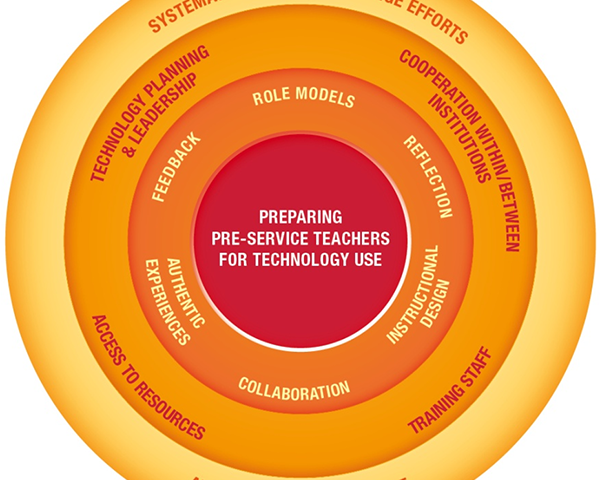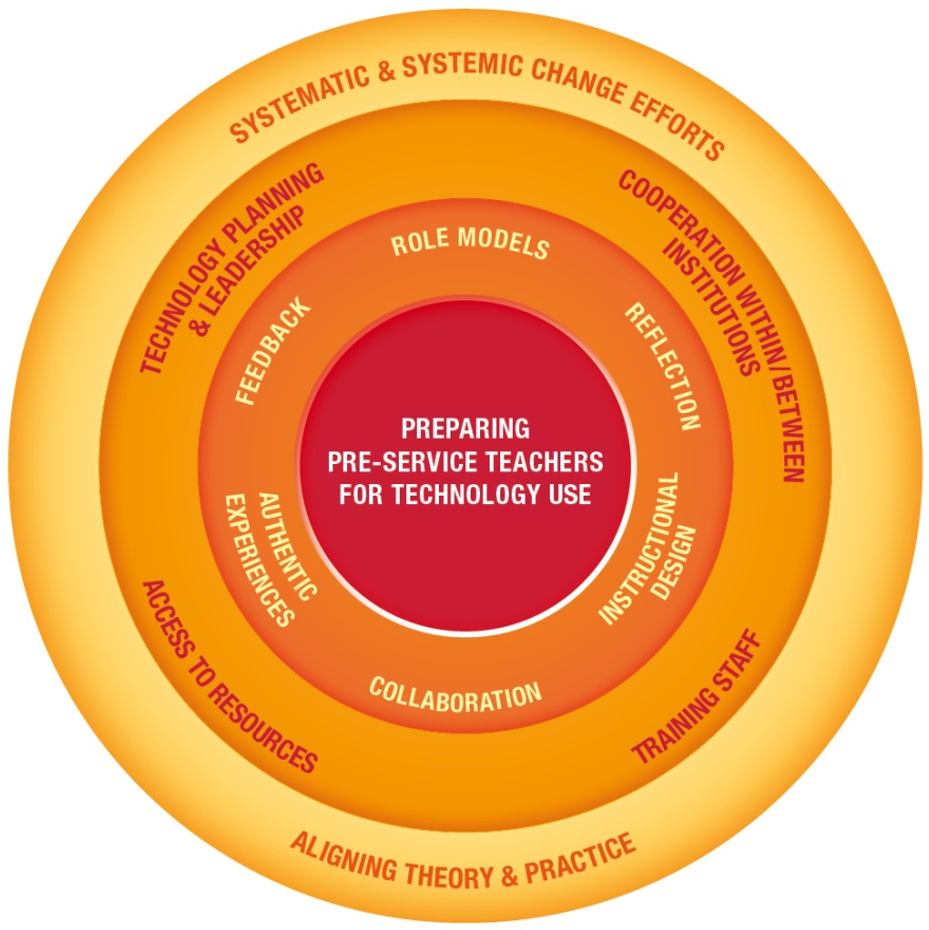Which strategies best prepare future teachers for educational ICT-use?

The paradox as educational design: learning with and without technology
August 4, 2017Which strategies best prepare future teachers for educational ICT-use?

The SQD (Synthesis of qualitative evidence)-model
Teacher training institutions (TTI) are expected to prepare pre-service teachers to integrate ICT in their teaching and learning practices. But promoting pre-service teachers’ competencies for educational ICT-use is a complex process that demands multiple strategies (Agyei & Voogt, 2014). The question remains how TTIs can get an overview of what are considered the effective strategies. In this respect, Tondeur et al. (2012) reviewed 19 qualitative studies in order to develop an SQD (Synthesis of Qualitative Research) model on which strategies best prepare pre-service teachers to integrate technology into their future classrooms.
According to the findings of this review, twelve key themes need to be in place. The two outward circles in the SQD-model include the conditions needed at the institutional level such as technology planning and leadership, training staff, access to resources, cooperation within and between the institutions. The two inner circles – the focus of this blogpost - include micro level strategies. The first strategy involves teacher educators acting as role models. Kaufman, (2015) found that having pre-service teachers watch examples of technological applications is helpful in building their foundational knowledge. Demonstrations has clear benefits but is not sufficient in ensuring pre-service teachers apply these examples when in their classroom. As pre-service teachers should also be able to interpret these examples in a specific educational context, the second strategy consists of discussing and reflecting upon successful uses of ICT. Dorner and Kumar (2016) describe the use of an online community where pre-service teachers had the opportunity to share, develop and critique learning resources to help then integrate technology in their lessons. This might help them see the utility, value and feasibility of using a particular technology and/or teaching strategy.
Research also suggests that providing the opportunity to learn about technology integration by (re-)designing curriculum materials (Strategy 3) can also be a promising strategy (see e.g., Lee & Lee, 2014). Pre-service teachers stated that ICT integration required additional planning and preparation because they had no prior knowledge about or experience with the design of ICT-supported learning activities. Many studies have demonstrated that group work (Strategy 4) might mitigate these feelings of insecurity when teachers need to design technology-related curriculum materials (Becuwe et al., 2016). As a fifth strategy, pre-service teachers may also apply their knowledge of educational technology in authentic settings (Sang et al., 2010). Finally, the sixth strategy involves on-going and process-oriented feedback, which has been proven to be beneficial for pre-service teachers’ abilities to use technology in the classroom.
To conclude, many TTIs have recognized the challenges associated with developing pre-service teachers’ ICT competencies. The SQD model can be used to better prepare future teachers for educational technology use and to structure the professionalization of teacher educators. Moreover, an instrument has been developed that can lead to valid and reliable benchmarking of the support future teachers need for the use of technology in education (see Tondeur et al., 2016).
References
Agyei, D. & Voogt, J. (2014). Examining factors affecting beginning teachers' transfer of learning of ICT-enhanced learning activities in their teaching practice. Australasian Journal of Educational Technology, 30 (1), 92-105.
Becuwe, H., Tondeur, J., Pareja Roblin, N., Thys, J., & Castelein, E. (In Press). Conditions to implement collaborative design as a strategy for professionel development. The case of ICT-integration in teacher education. Australasion Journal of Educational Technology.
Kaufman, K. (2015). Information Communication Technology: Challenges & Some Prospects from Preservice Education to the Classroom. Mid-Atlantic Education Review, 2, 1–11.
Sang, G., Valcke, M., van Braak, J., & Tondeur, J. (2010). Student teachers’ thinking processes and ICT integration: Predictors of prospective teaching behaviors with educational technology. Computers & Education, 54(1), 103-112.
Tondeur, J., Siddiq, F., Scherer, R., & van Braak, J. (2016). Time for a new approach to prepare future teachers for educational technology use: Its meaning and measurement. Computers & Education.
Tondeur, J., van Braak, J., Sang, G., Voogt, J., Fisser, P., & Ottenbreit-Leftwich, A. (2012). Preparing pre-service teachers to integrate technology in education: A synthesis of qualitative evidence. Computers & Education, 59(1), 134-144





